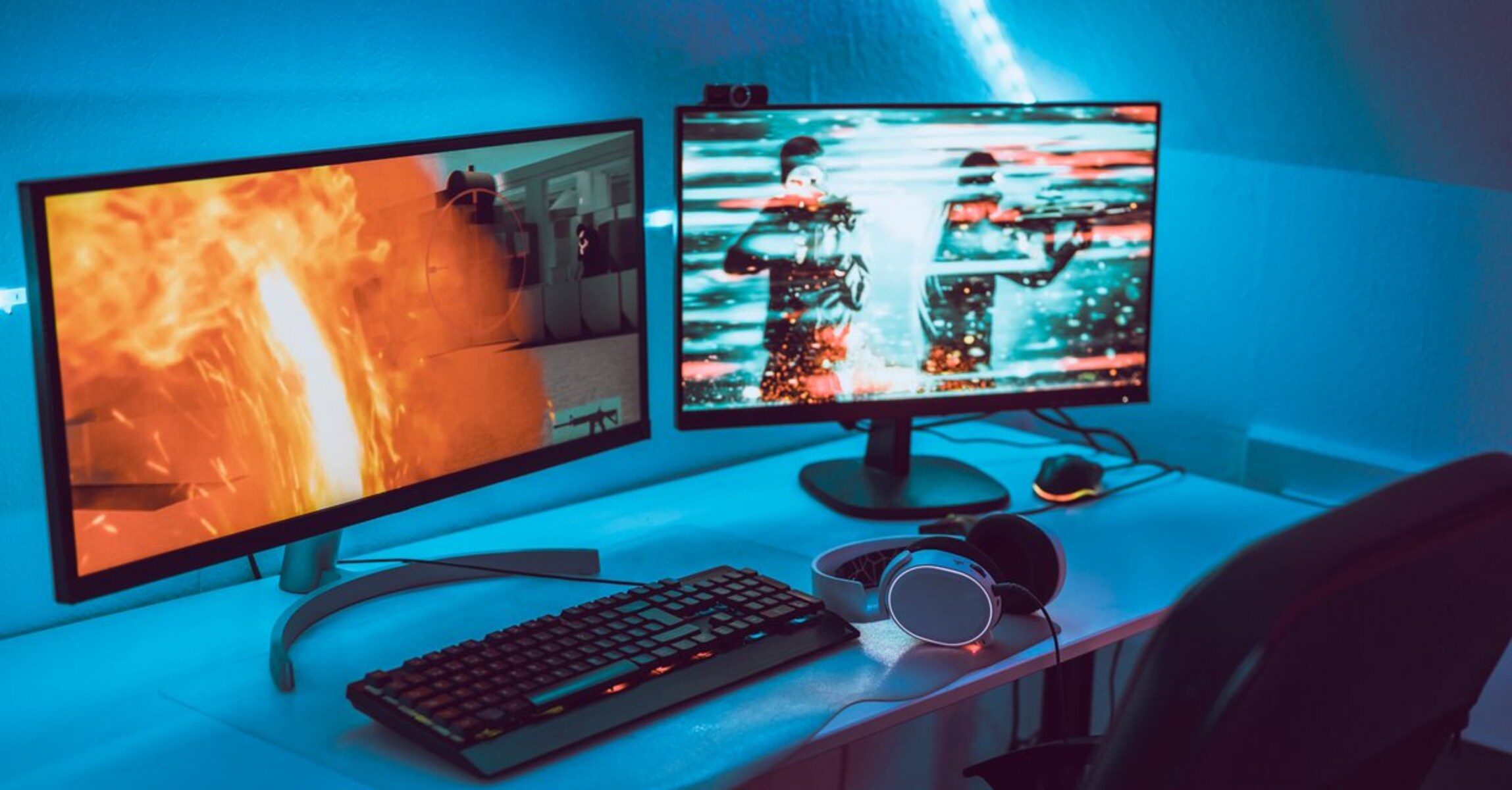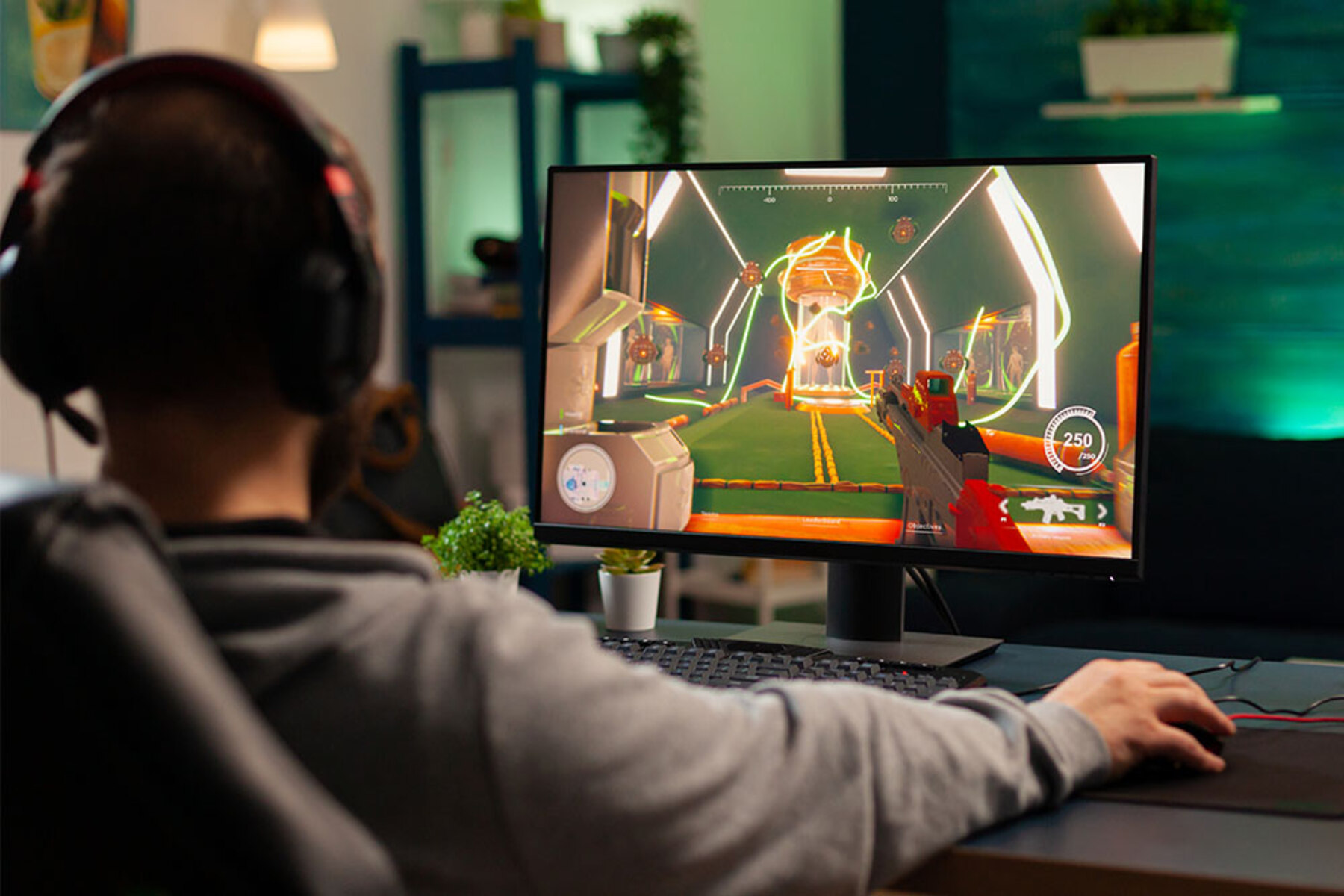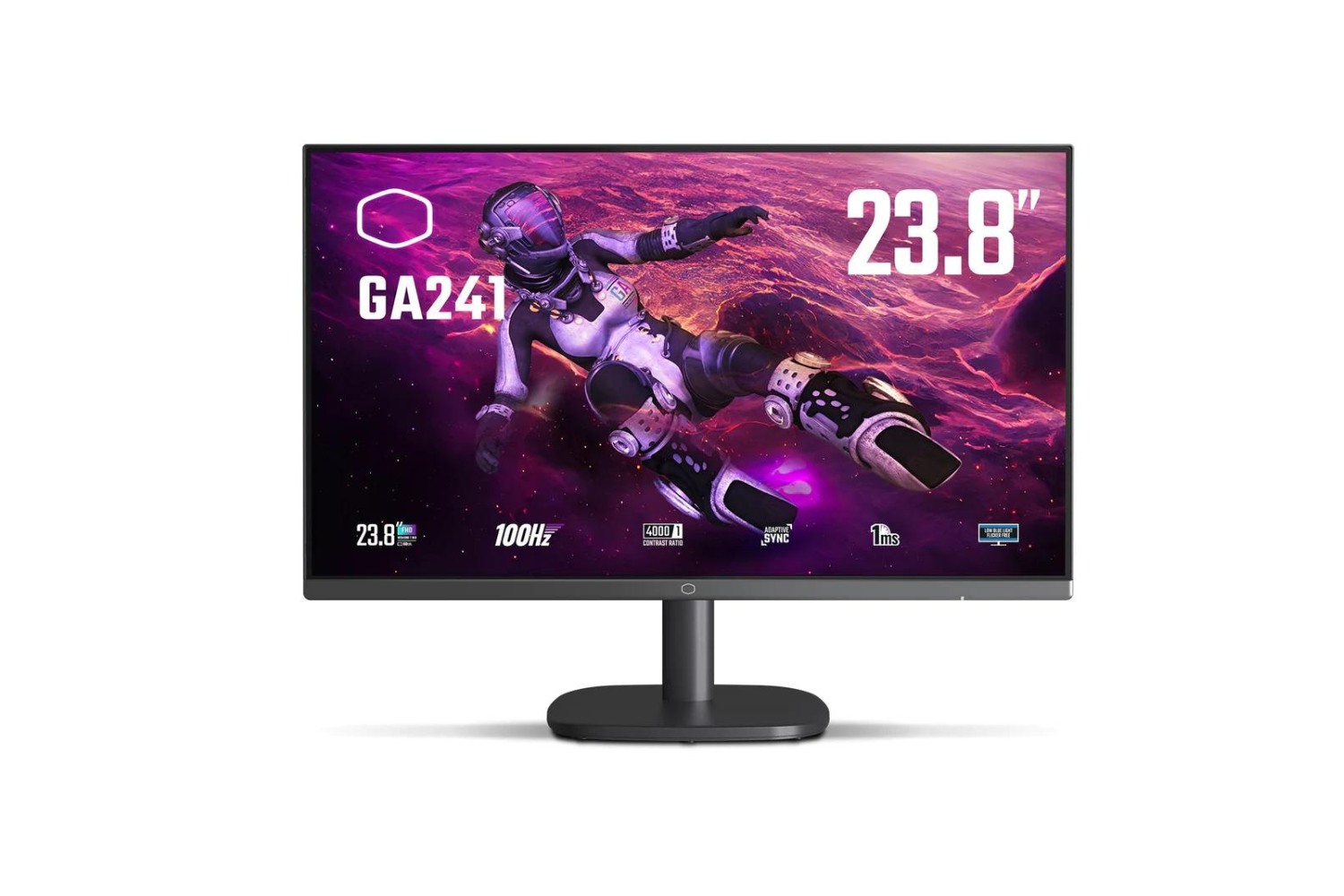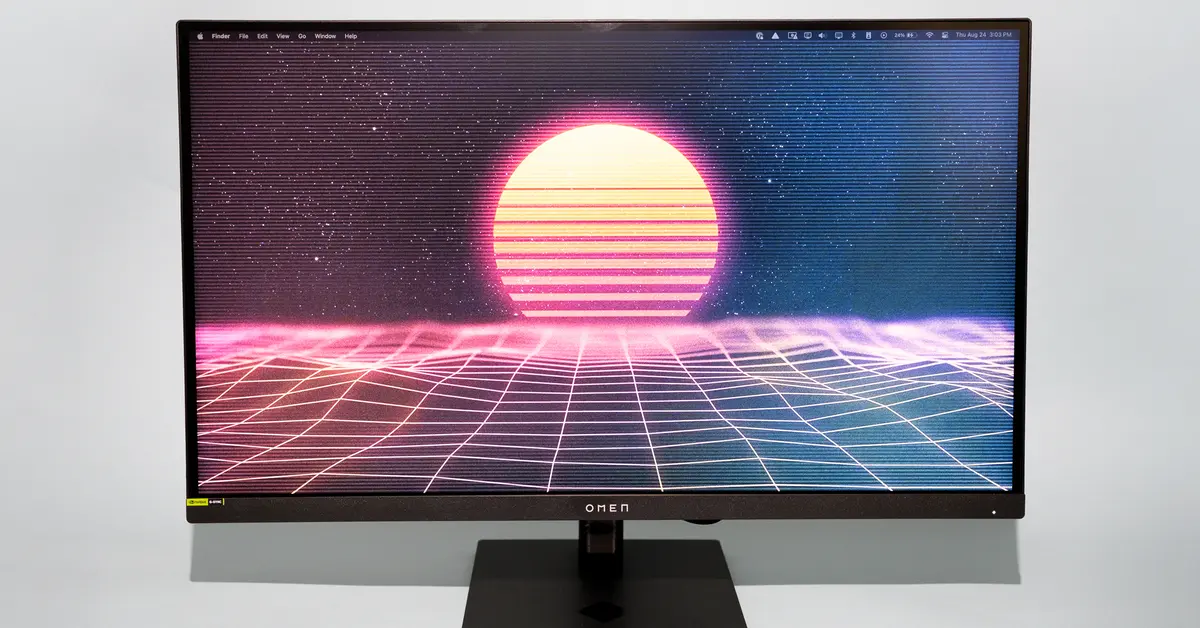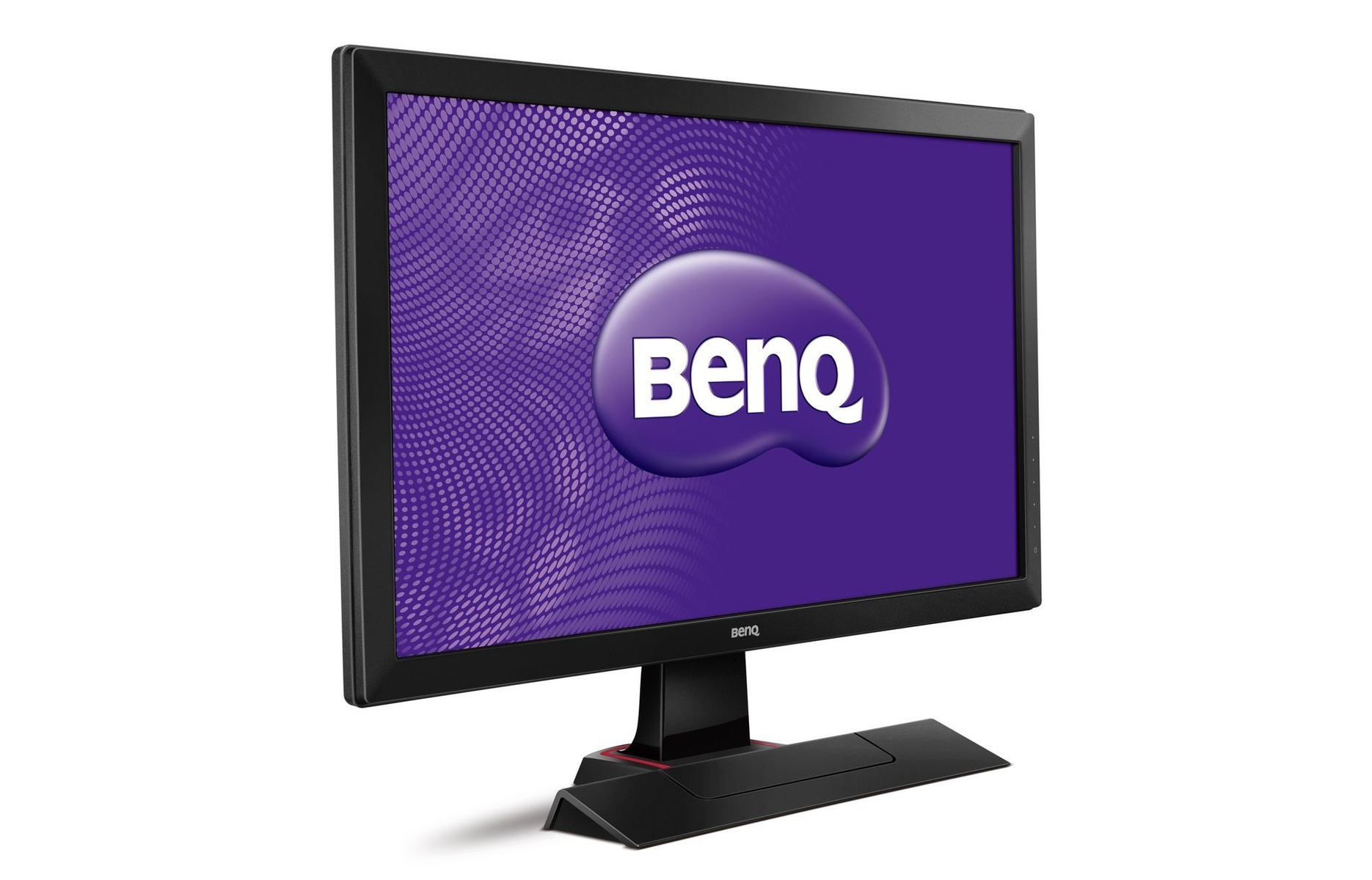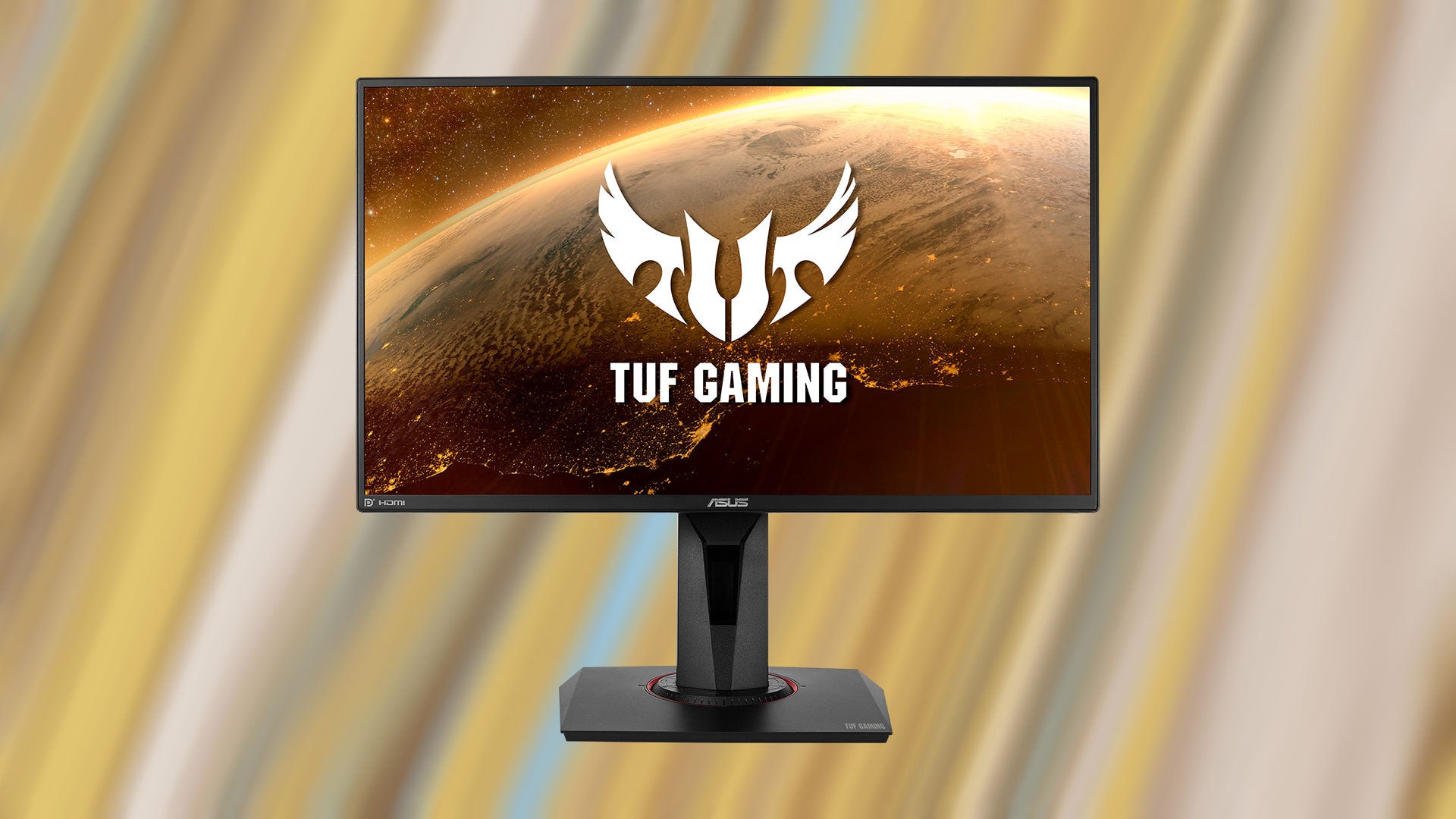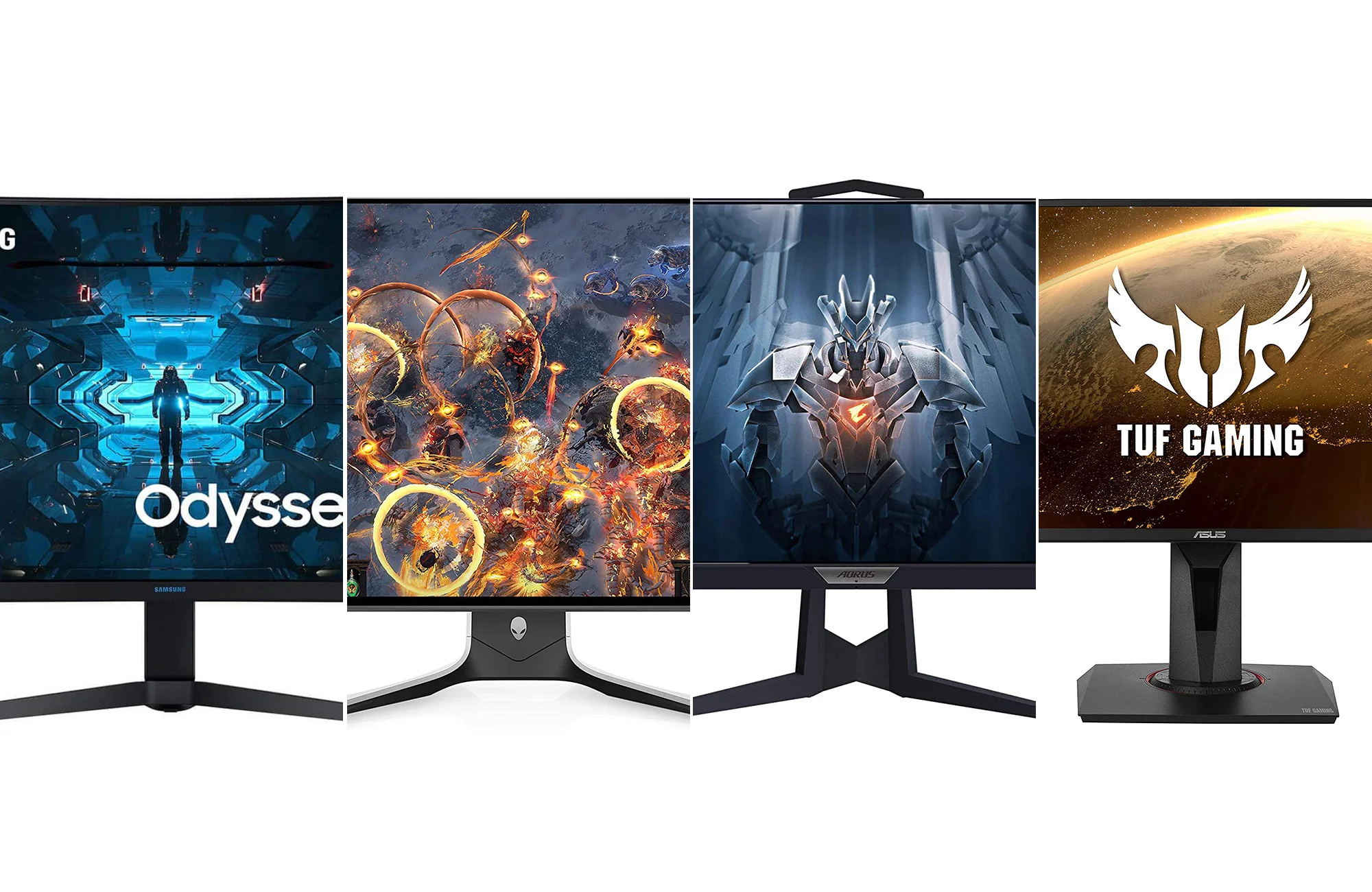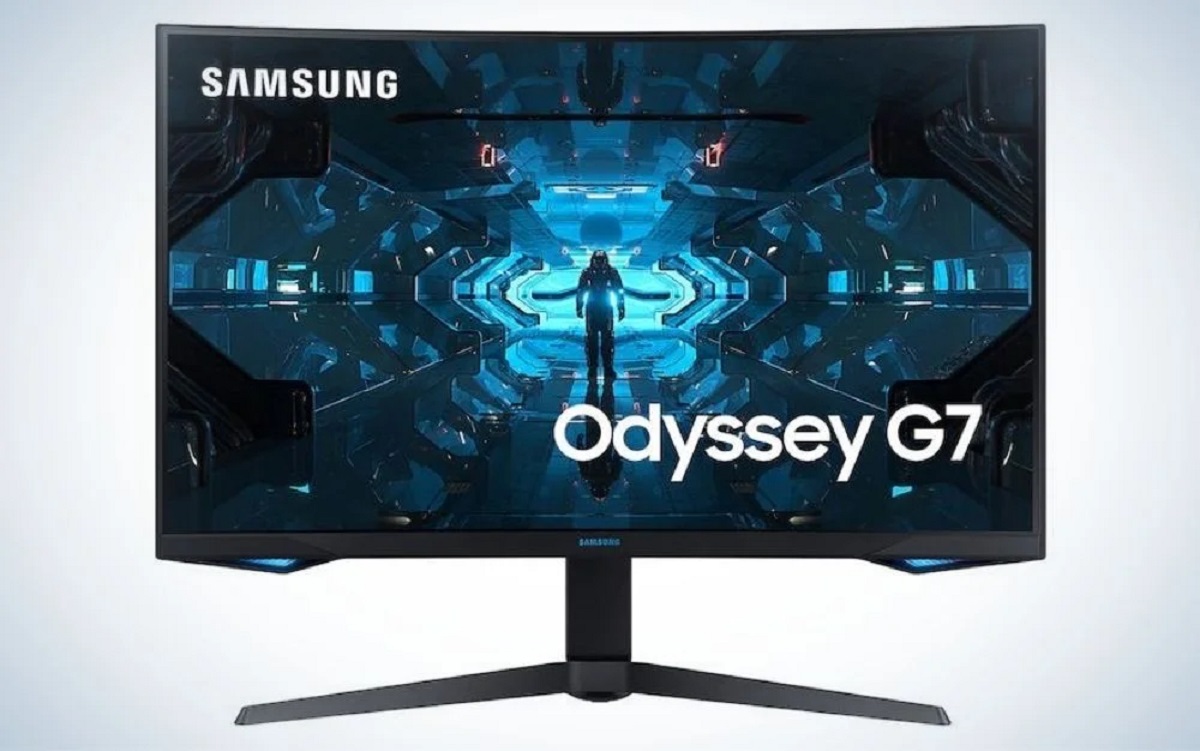Understanding Refresh Rate
Refresh rate is an important specification to consider when purchasing a gaming monitor. It refers to the number of times the display updates its content per second. The refresh rate is measured in Hertz (Hz). A higher refresh rate means that the displayed image will be refreshed more frequently, resulting in smoother and more fluid motion.
When it comes to understanding refresh rate, it’s helpful to think of it as similar to frames per second (FPS) in video games. Just as a higher FPS provides a smoother gaming experience, a higher refresh rate provides a smoother visual experience on your monitor, making it particularly important for gamers.
Most monitors have a default refresh rate of 60Hz, which means that the image on the screen is refreshed 60 times per second. This is often sufficient for casual use and regular tasks such as web browsing and watching movies. However, when it comes to gaming, a higher refresh rate can make a significant difference in the overall experience.
Some gaming monitors offer higher refresh rates, such as 144Hz or even 240Hz. These higher frequencies result in a more fluid and responsive display, allowing you to see more frames per second and react more quickly to in-game actions. This can be particularly advantageous in fast-paced games, where split-second decisions can mean the difference between victory and defeat.
It’s important to note that your gaming experience won’t be significantly improved by a higher refresh rate if your graphics card cannot output a matching FPS. For example, if your game is running at only 60 FPS, even with a 144Hz monitor, you won’t see any additional frames beyond the 60 FPS limit.
Furthermore, the impact of a higher refresh rate also depends on the type of game you are playing. In games with fast movement and quick camera panning, such as first-person shooters or racing games, a higher refresh rate can greatly enhance the smoothness and responsiveness of the gameplay. On the other hand, for slower-paced games like strategy or turn-based games, the difference may not be as noticeable or essential.
Determining the right refresh rate for your gaming needs ultimately depends on your preferences, the types of games you play, and your hardware capabilities. In the next section, we will dive into the pros and cons of different refresh rates, which will further aid in making an informed decision when choosing a gaming monitor.
The Importance of Refresh Rate in Gaming
Refresh rate plays a crucial role in gaming, as it directly affects the smoothness and responsiveness of the visuals on your gaming monitor. Higher refresh rates provide a more immersive and enjoyable gaming experience, allowing you to react quickly to in-game actions and perceive even the smallest details with clarity. Here are several reasons why refresh rate is important in gaming:
- Fluid and Smooth Motion: A higher refresh rate, such as 144Hz or 240Hz, ensures that the on-screen action appears seamless and fluid. This means smoother camera panning, faster-moving objects, and more realistic animations. The overall gaming experience becomes more immersive and enjoyable, as you feel fully engaged in the game world.
- Reduced Motion Blur: With a higher refresh rate, the monitor refreshes the image more frequently, reducing motion blur. Motion blur occurs when there is a gap between the frames, resulting in a “smearing” effect. By increasing the refresh rate, the time between frames decreases, minimizing motion blur and providing better visual clarity, especially during fast-paced gameplay.
- Enhanced Responsiveness: A higher refresh rate allows for faster updates between input commands and the display’s response. This means that your actions and movements in the game will be reflected on the screen more quickly, providing a more responsive and accurate gaming experience. This is particularly important in competitive gaming, where split-second reactions can make all the difference.
- Improved Eye Comfort: While not directly related to gameplay, a higher refresh rate can also help reduce eye strain. With a lower refresh rate, prolonged gaming sessions can lead to eye fatigue and discomfort. The smoother motion provided by a higher refresh rate is gentler on the eyes, allowing for longer and more comfortable gaming sessions.
It’s worth mentioning that experiencing the full benefits of a higher refresh rate requires adequate hardware capabilities. To achieve a high FPS to match a high refresh rate, you will need a powerful graphics card and a capable gaming rig. Without the right hardware, you may not fully utilize the potential of a higher refresh rate monitor.
Now that we understand the importance of refresh rate in gaming, let’s explore the different common refresh rates available for gaming monitors and their respective pros and cons.
Common Refresh Rates for Gaming Monitors
Gaming monitors come with various refresh rate options to cater to different needs and budgets. Here are the most common refresh rates you’ll find:
- 60Hz: This is the standard refresh rate for most monitors. It means the image on the screen refreshes 60 times per second. While it is suitable for everyday use, it may not provide the smoothest gaming experience, particularly in fast-paced games where motion blur and input lag might be noticeable.
- 75Hz: Offering a slight improvement over 60Hz, a 75Hz refresh rate provides a smoother visual experience, with reduced motion blur and improved responsiveness. It’s a modest upgrade for gamers who want a slightly better gaming performance without breaking the bank.
- 144Hz: A 144Hz refresh rate has become the go-to choice for many gamers. It offers significant improvements in motion clarity and responsiveness, allowing for smoother gameplay and accurate input recognition. With a higher frame rate, fast-paced games feel more fluid and enjoyable, providing a competitive edge to gamers.
- 240Hz: Aimed at competitive gamers and enthusiasts, the 240Hz refresh rate is the pinnacle of smoothness. With this ultra-high refresh rate, motion blur is virtually eliminated, and input response time is incredibly fast. However, it’s important to note that you will need a powerful hardware setup to consistently achieve high frame rates to fully utilize a 240Hz monitor.
When choosing a gaming monitor, it’s essential to consider your gaming preferences, the types of games you play, and your hardware capabilities. While higher refresh rates offer significant improvements in gaming experience, it’s important to find the right balance between performance and affordability.
Keep in mind that the higher the refresh rate, the more demanding it is on your system’s resources. Achieving higher FPS in games to match a high refresh rate often requires a powerful graphics card and a capable processor. If your hardware cannot consistently maintain high frame rates, investing in a monitor with a super-high refresh rate may not be worth it.
Now that we’ve explored the common refresh rates available for gaming monitors, let’s delve into the pros and cons of different refresh rates to help you make an informed decision when choosing the best refresh rate for your gaming needs.
Pros and Cons of Different Refresh Rates
When it comes to choosing the right refresh rate for your gaming monitor, it’s essential to consider the pros and cons of different options. Here’s a breakdown of the advantages and disadvantages of various refresh rates:
60Hz:
Pros:
- Widely available and budget-friendly.
- Sufficient for everyday use and less graphically demanding games.
- Compatible with most hardware configurations.
Cons:
- May result in motion blur and input lag, especially in fast-paced games.
- Offers a less immersive gaming experience compared to higher refresh rates.
75Hz:
Pros:
- Slightly smoother visuals compared to 60Hz.
- Reduced motion blur and improved responsiveness.
- Cost-effective option for gamers on a budget.
Cons:
- Still limited in providing a truly immersive and competitive gaming experience.
- Not suitable for extremely fast-paced games that require quick reflexes.
144Hz:
Pros:
- Significantly smoother motion and reduced motion blur.
- Improved responsiveness and accuracy in gameplay.
- Enhanced visual experience, especially in fast-paced games.
Cons:
- Requires a more powerful graphics card and system to achieve high frame rates.
- Costs more than lower refresh rate options.
240Hz:
Pros:
- Unparalleled smoothness and crispness in gaming visuals.
- Virtually eliminates motion blur and provides lightning-fast input response.
- Highly advantageous for competitive gaming.
Cons:
- Demands a top-tier graphics card and CPU to consistently achieve high frame rates.
- Significantly higher cost compared to lower refresh rate options.
- May not be necessary or noticeable for casual gamers or slower-paced games.
When making a decision, consider your gaming preferences, the types of games you play, your hardware capabilities, and your budget. Keeping these factors in mind will help you select a refresh rate that offers the best balance between performance, affordability, and your overall gaming experience.
What Refresh Rate is Best for Competitive Gaming?
When it comes to competitive gaming, having a high refresh rate is crucial to gaining a competitive edge. The smoothness, responsiveness, and visual clarity provided by a fast refresh rate can significantly enhance your gaming performance. Here’s what you need to know about choosing the best refresh rate for competitive gaming:
144Hz: A 144Hz refresh rate is often considered the sweet spot for competitive gaming. With its significantly smoother motion and reduced motion blur, it offers a substantial improvement over lower refresh rates. The increased responsiveness and accuracy make it easier to track fast-moving objects, spot enemies, and react swiftly in intense gaming situations. This refresh rate strikes a balance between performance and affordability, making it a popular choice among competitive gamers.
240Hz: For those seeking the ultimate advantage in competitive gaming, a 240Hz refresh rate offers unparalleled smoothness and responsiveness. With almost no motion blur and lightning-fast input response, this refresh rate provides an immersive and incredibly precise gaming experience. However, it’s important to note that achieving and maintaining consistently high frame rates required for a 240Hz monitor can be demanding on your system resources. You’ll need a powerful graphics card and CPU to ensure you can fully utilize the capabilities of a 240Hz monitor.
It’s worth mentioning that the refresh rate alone won’t guarantee success in competitive gaming. A higher refresh rate should be complemented by other crucial factors like low input lag, a high-quality display panel, and a fast response time. These factors combined can provide you with a competitive advantage, allowing for quicker and more accurate reactions in crucial gaming moments.
When it comes to selecting the best refresh rate for competitive gaming, consider your budget and the capabilities of your gaming hardware. If you have a powerful gaming rig and can consistently achieve high frame rates in your games, a higher refresh rate, such as 240Hz, may give you that additional edge. However, if you’re on a budget or your hardware cannot maintain extremely high frame rates, a 144Hz refresh rate is still a fantastic option.
In summary, a higher refresh rate, specifically 144Hz or 240Hz, is best for competitive gaming, providing smoother motion, reduced motion blur, and improved responsiveness. However, ensure that your hardware can support and consistently achieve high frame rates before investing in a monitor with a higher refresh rate. Combine the right refresh rate with other gaming monitor features to optimize your gaming performance and dominate in competitive gaming.
Factors to Consider When Choosing a Gaming Monitor Refresh Rate
When choosing a gaming monitor refresh rate, several important factors should be taken into consideration. These factors will help you make an informed decision that aligns with your gaming preferences and hardware capabilities. Here are the key factors to consider:
Gaming Preferences: Consider the types of games you play and the level of competitiveness you aspire to achieve. If you primarily play slower-paced games or are more of a casual gamer, a lower refresh rate, such as 60Hz or 75Hz, may suffice. However, if you indulge in fast-paced, action-packed games or aspire to compete at a high level, consider higher refresh rates like 144Hz or even 240Hz for a smoother and more responsive gaming experience.
Hardware Capabilities: It’s essential to assess your hardware capabilities, specifically your graphics card and CPU. Higher refresh rates require more processing power to consistently achieve high FPS. Ensure that your gaming rig is capable of delivering the necessary frame rates to fully utilize the benefits of a higher refresh rate monitor. Investing in a high refresh rate monitor without sufficient hardware support may result in underutilization of its potential.
Budget: Refresh rates often come at different price points. Higher refresh rates generally come with a higher price tag. Consider your budget and weigh the performance improvements against the cost. If you’re on a limited budget, a 144Hz refresh rate is a popular and affordable option that provides a significant improvement over lower refresh rates. If your budget allows, stepping up to a 240Hz refresh rate may offer the highest level of smoothness and responsiveness, though at a higher cost.
G-Sync or FreeSync Compatibility: G-Sync and FreeSync are technologies designed to sync the refresh rate of your monitor with your graphics card’s output, resulting in smoother gameplay with reduced tearing and stuttering. If you have an Nvidia graphics card, consider a G-Sync compatible monitor, while AMD users should seek out FreeSync compatible options. These technologies can further enhance the gaming experience, especially when paired with a higher refresh rate monitor.
Future-proofing: While it’s important to consider your current gaming needs and hardware capabilities, it’s also wise to think ahead. If you anticipate upgrading your graphics card or other components in the future, it may be beneficial to invest in a higher refresh rate monitor that can fully utilize those upgrades. This future-proofing approach ensures that your monitor will continue to deliver optimal performance as you upgrade your gaming setup.
By taking these factors into account, you can make an informed decision when choosing the best gaming monitor refresh rate for your needs. Remember to consider your gaming preferences, hardware capabilities, budget, G-Sync or FreeSync compatibility, and future upgrade plans. Finding the right balance between performance, affordability, and future-proofing will lead to an optimal gaming experience.
How to Change the Refresh Rate on Your Gaming Monitor
Changing the refresh rate on your gaming monitor is a straightforward process, and it can be done using the display settings on your computer. Here’s a step-by-step guide on how to change the refresh rate:
- Right-click on your desktop and select “Display settings” from the dropdown menu. This will open the display settings window.
- In the display settings window, scroll down and click on “Advanced display settings.”
- Under the advanced display settings, click on “Display adapter properties for [your monitor name].”
- In the pop-up window, navigate to the “Monitor” tab.
- Under the “Monitor Settings” section, you will find a drop-down menu labeled “Screen refresh rate.” Click on the drop-down menu to see the available refresh rate options.
- Select the desired refresh rate from the available options. If your monitor supports a higher refresh rate, you may see options like 144Hz or 240Hz, along with the standard 60Hz and 75Hz.
- After selecting the desired refresh rate, click on “Apply” to save the changes.
- You may be prompted with a confirmation dialog asking if you want to keep the new display settings. Click “Keep changes” to confirm the new refresh rate.
- The display settings window will close, and your gaming monitor will now be set to the new refresh rate.
Note that the available refresh rate options may vary based on your monitor’s capabilities and the graphics card drivers installed on your computer. Ensure that your monitor and graphics card support the desired refresh rate before making changes. If you’re unsure about the capabilities of your monitor, you can refer to the monitor’s user manual or the manufacturer’s website for more information.
Changing the refresh rate on your gaming monitor can provide a smoother and more responsive gaming experience. Experiment with different refresh rates to find the one that best suits your gaming preferences and hardware capabilities. Remember to consider your graphics card’s output capabilities and ensure your hardware can consistently achieve high frame rates to fully utilize the benefits of a higher refresh rate monitor.
Frequently Asked Questions about Gaming Monitor Refresh Rates
Here are answers to some common questions about gaming monitor refresh rates:
Q: What is the ideal refresh rate for gaming?
A: The ideal refresh rate for gaming depends on your preferences, the types of games you play, and your hardware capabilities. Generally, a refresh rate of 144Hz is considered a good balance of smoothness and affordability for most gamers.
Q: Do higher refresh rates make a noticeable difference in gaming?
A: Yes, higher refresh rates, such as 144Hz or 240Hz, can make a noticeable difference in gaming. They provide smoother motion, reduced motion blur, and improved responsiveness, enhancing the overall gaming experience, especially in fast-paced games.
Q: Can I use a higher refresh rate on any gaming monitor?
A: Not all gaming monitors support higher refresh rates. Make sure to check the specifications of your monitor to see if it can handle higher refresh rates. Additionally, consider the capabilities of your graphics card and ensure it can output high frame rates to fully utilize the benefits of a higher refresh rate monitor.
Q: Will a higher refresh rate improve my gaming performance?
A: A higher refresh rate alone will not directly improve your gaming performance. However, it can enhance the smoothness, responsiveness, and visual clarity of your gaming experience, which can positively impact your overall gaming performance and enjoyment.
Q: Can my hardware handle a higher refresh rate?
A: It depends on your hardware capabilities, specifically your graphics card and CPU. Higher refresh rates require more processing power to consistently achieve high frame rates. Ensure that your hardware can support and maintain the necessary frame rates for a higher refresh rate monitor.
Q: Can I use adaptive sync technologies with different refresh rates?
A: Yes, adaptive sync technologies like G-Sync or FreeSync can be used with different refresh rates. These technologies dynamically adjust the refresh rate of your monitor to match the output of your graphics card, reducing screen tearing and providing a smoother gaming experience.
Q: Are higher refresh rates only beneficial for competitive gaming?
A: Higher refresh rates are beneficial for competitive gaming due to their smoother motion, reduced motion blur, and improved responsiveness. However, they can also enhance the overall gaming experience in any game genre, providing an immersive and enjoyable visual experience.
Q: Can I change the refresh rate on my console gaming monitor?
A: The refresh rate on console gaming monitors is typically fixed and cannot be changed. However, some newer console models, such as the Xbox Series X and the PlayStation 5, support higher refresh rates up to 120Hz, provided your monitor also supports it.
Q: Does the cable I use affect the refresh rate?
A: Yes, the cable you use can affect the refresh rate. For higher refresh rates, such as 144Hz or 240Hz, it’s recommended to use a high-quality DisplayPort cable or an HDMI cable that supports the necessary bandwidth.
These are just a few frequently asked questions about gaming monitor refresh rates. If you have more specific inquiries or concerns, be sure to consult the manufacturer or do further research to ensure you make informed decisions regarding your gaming setup.







